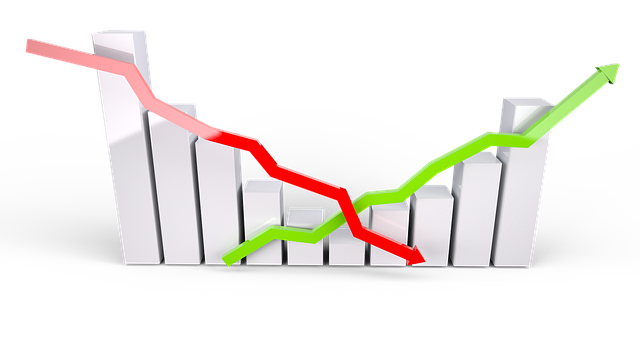Fundamental Analysis Philippines: A Comprehensive Guide

Understanding the stock market can be challenging. This is especially true if you’re a new investor and don’t know where to start. Which stock investment strategy will work for you? Many experts in the field recommend fundamental analysis.
When done properly, it is highly effective. This article will show you how.
What Is Fundamental Analysis in Stock Investing?
Fundamental analysis is a technique used to calculate what a stock or business is worth. This estimate is called an asset’s intrinsic value. Several factors can affect this number. They can be summarized into two categories. These are:
When these are also weighed in, an investor can identify the underlying aspects that may affect a business’ current financial situation and how it may fare in the future. This determines whether it is a wise investment or not.
Popular investors who use this technique
Billionaire Warren Buffet has followed this method by analyzing the fundamentals of a company. These are the quantitative and qualitative data pertaining to their economic success.
Business leader Peter Lynch developed the habit of investing in companies that were undervalued. He saw their potential and expected a rise in the stock market price. The price-to-earnings ratio is commonly used in fundamental analysis.
Value investor Joel Greenblatt has built up on Warren Buffet’s idea with a “magic formula” that systematically screens stocks that are doing well for cheap.
How is this different from technical analysis?
Technical analysis doesn’t take into account a stock’s fundamentals. Instead, decisions are based on past trends in market data.

Why Perform Fundamental Analysis?
A safer strategy to day trading
Day trading make a profit off an asset’s fluctuations in price. Some consider it controversial, as the reward one can gain isn’t always worth the risk. A good part of a trader’s success relies on luck and good timing. This makes it typically unreliable.
More time to grow your money
This method facilitates investment decisions with a long-term vision. That is because the company’s intrinsic value involves many aspects that are generally stable, such as:
- Tangible assets: It has a definite monetary value and is something physical. A few examples of this are property, inventory, equipment and vehicles.
- Intangible assets : These do not have a physical form, but are valuable in their contribution to a company’s overall success.
A better understanding of companies’ underlying business financials
Since a stock’s market price doesn’t necessarily reflect its real value, a fundamental analysis can help investors find an asset’s target price. It’s an educated guess as to what a stock may potentially be worth in the future.
A sound basis for investing in stocks
Fundamental analysis provides the layout of a company’s performance. It also gives insight as to whether it is a good investment or not.

Disadvantages of Fundamental Analysis
People without a background in finance and accounting may not be familiar with all of the terms used. Some examples of these are:
- P/E ratio: This is a measuring stick that allows the investor to know how expensive or how cheap a stock is compared to its earning power.
- Balance sheet: Compares a company’s currents assets to its liabilities and owner’s equity
- Income statements: How a company earns its money by showing their revenues and expenses
- Cashflow statements: How a company uses cash to operate the business and make investments, as well as how much is borrowed from a bank or bond holder.
You may have heard of people who became rich overnight, earning millions in the stock trade. Although this does happen, it is more realistic to say that success takes time.
The stock market is volatile. Instability in the political sphere and in world economy can cause big market swings. There are constant changes in supply and demand. As a beginner, it would be cautious to invest in “safe” stocks. They figure on the larger scale and are popular or well-known.
Although fundamental analysis does give a good estimate as to how an asset will fare down the road, there is a margin for error. Forecasts can be disappointing when they underperform.

How To Get Started with Fundamental Analysis
1. Allocate a portion of your monthly income to invest in stocks
Invest what your personal finances allow. Some things to think about are your age, your tolerance to potential risks and whatever investment goals you may have.
2. Think about which companies you’d like to invest in and do your research
This can be done by analyzing their financial statements. You may want to start with blue chip stocks. These are popular choices in the stock market because they are relatively stable.
3. Purchase stocks using a peso-cost averaging strategy.
We wrote a separate guide about peso-cost averaging method here: Peso-Cost Averaging Philippines: A Definitive Guide
4. Read some books on fundamental analysis
These successful authors have earned millions from applying fundamental analysis in their investment strategies.
- Security Analysis by Benjamin Graham and David L. Dodd
- The Intelligent Investor by Benjamin Graham
- Learn to Earn by Peter Lynch
- Common Stocks and Uncommon Profits by Philip Fisher
- The Theory of Investment Value by John Burr Williams
- Ratio Analysis Fundamentals by Axel Tracy
Watch online video courses on fundamental analysis
Many websites offer help and guidance with this, some for free and some for a fee.
Buy This Book
Pinoy Power Investing by Verniel Cutar will help you in your journey to investing with fundamental analysis.

It will give you a solid foundation on various fundamental analysis strategies such as looking for bargain stocks, estimating how much a company is worth, building a winning portfolio, and many others!
Is Fundamental Analysis A Good Investing Approach?
Like anything in the stock market trade, there are advantages and disadvantages. However, as you can see from this comprehensive guide to fundamental analysis, this technique is solid and safe. There are many ways to invest and make money. What is important is to find the strategy that works for you and that you feel comfortable with. And then, stick to it! There is always room for improvement. This article’s a good start. Now, take in more knowledge about investing. Ask questions. Do your research. You have everything you need to make it. Many resources are at your fingertips!
Conclusion
To succeed in stock market investing, you must develop a solid strategy to help you earn profit annually. Sign up to my free 5-day email course to discover the simple strategy that helped me earn a stock portfolio return of 22. 79% in just 11 months!
